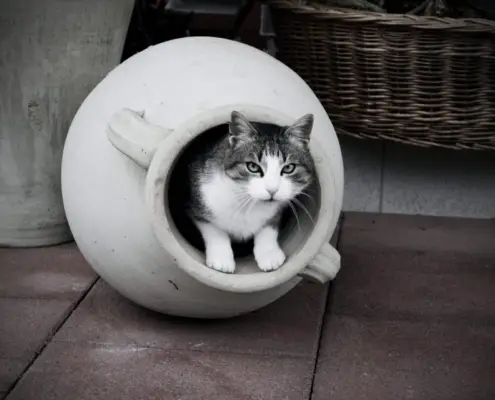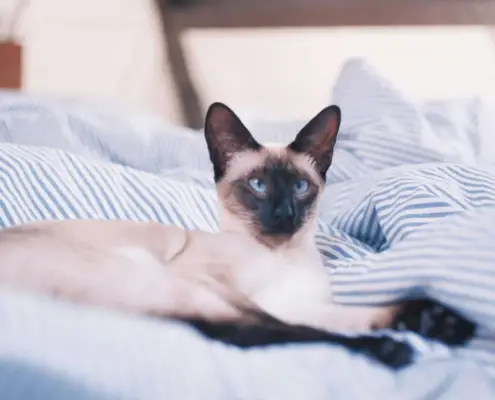
Cats have long been known for their mysterious and independent nature. One of the most intriguing aspects of their behavior is their heightened activity levels during the night. While humans may find solace in sleep, cats seem to come alive when the world around them is quiet and still. This article aims to delve deeper into the reasons behind this peculiar behavior, shedding light on the evolutionary, biological, and environmental factors that contribute to cats’ nighttime activity.
Evolutionary reasons for cats being active at night
To understand why cats are active at night, it’s essential to look back at their evolutionary history. Cats are natural hunters, descendants of solitary nocturnal predators. Their ancestors relied on their acute senses, sharp reflexes, and enhanced night vision to stalk prey under the cover of darkness. Over centuries of evolution, these traits have become ingrained in domestic cats, leading to their inherent inclination for nighttime activity.
Cats’ natural hunting instincts
Cats possess a remarkable set of hunting instincts that are triggered during the night. Their acute hearing allows them to detect subtle sounds, such as the rustling of small prey. Their eyes, equipped with a layer of cells called the tapetum lucidum, reflect light back through the retina, enhancing their night vision. This combination of heightened senses and predatory instincts makes the nighttime the perfect playground for cats to engage in their natural hunting behavior.
The influence of a cat’s internal clock
Another significant factor contributing to cats’ nighttime activity is their internal clock, also known as the circadian rhythm. Cats, like many other nocturnal animals, have an internal clock that is wired to be more active during the night. This biological clock regulates various physiological and behavioral processes, including sleep-wake cycles. While humans have adapted to diurnal rhythms, cats’ internal clocks continue to align with their nocturnal heritage, leading to their increased activity when the sun goes down.
Environmental factors that contribute to nighttime activity
Apart from their evolutionary and biological predispositions, cats’ nighttime activity is also influenced by external environmental factors. Cats are crepuscular creatures, meaning they are most active during dawn and dusk. The transition from day to night triggers their instinctual behavior, as the low light conditions mimic their natural hunting environment. Additionally, the absence of human activity and reduced noise levels during the night create a more conducive environment for cats to freely roam and explore their surroundings.
Understanding the impact of artificial lighting on cats’ behavior
In today’s modern world, artificial lighting has become an integral part of our lives. However, this artificial illumination can have a significant impact on cats’ behavior during the night. Cats are highly sensitive to changes in light, and exposure to bright lights during the evening can disrupt their natural circadian rhythm. The constant presence of artificial light can confuse their internal clocks, leading to altered sleep patterns and increased nighttime activity. It is important for cat owners to be mindful of the lighting conditions in their homes and create a soothing and dimly lit environment during the night to help their feline companions maintain a healthy sleep-wake cycle.
Health and age-related factors that affect nighttime activity in cats
While cats’ nighttime activity is primarily driven by their evolutionary and biological instincts, certain health and age-related factors can influence their behavior. Chronic pain, discomfort, or underlying medical conditions may cause restlessness and lead to increased nighttime activity. Older cats, in particular, may experience age-related cognitive changes, such as feline cognitive dysfunction, which can disrupt their sleep patterns and contribute to nocturnal activity. It is crucial for cat owners to monitor their feline friends’ health and seek veterinary advice if they notice any significant changes in their nighttime behavior.
Tips for managing a cat’s nighttime behavior
Managing a cat’s nighttime behavior can be challenging but not impossible. Understanding their natural instincts and providing appropriate outlets for their energy can help alleviate excessive activity during the night. Here are some tips to establish a cat-friendly nighttime routine:
- Playtime: Engage in interactive play sessions with your cat during the evening to simulate their hunting instincts and tire them out before bedtime.
- Enriching the environment: Provide stimulating toys, scratching posts, and climbing structures to keep your cat mentally and physically engaged during the night.
- Feeding schedule: Consider feeding your cat a small meal right before bedtime. A satisfied stomach can promote a sense of relaxation and encourage sleep.
- Creating a cozy sleeping space: Designate a comfortable and quiet area for your cat to sleep, away from external disturbances and bright lights.
- Consistency: Establish a consistent bedtime routine for your cat, including playtime, feeding, and quiet time, to help regulate their internal clock and promote a sense of security.
Embracing and accommodating cats’ nighttime behavior
In conclusion, cats’ nighttime activity can be attributed to a combination of evolutionary, biological, and environmental factors. Their natural hunting instincts, internal clocks, and the influence of artificial lighting all play a role in their heightened activity levels during the night. Understanding and embracing cats’ nocturnal nature is crucial for providing them with a fulfilling and enriched life. By creating a cat-friendly nighttime routine and accommodating their unique needs, cat owners can ensure both their feline companions and themselves enjoy peaceful nights and harmonious days.
If you enjoyed my article, I would appreciate you sharing it with your network.

Sima Ndlebe
Sima writes for CatBuzz. He is interested in Cats, Health and Fitness, and Entrepreneurship.
Published: 15 November 2023




